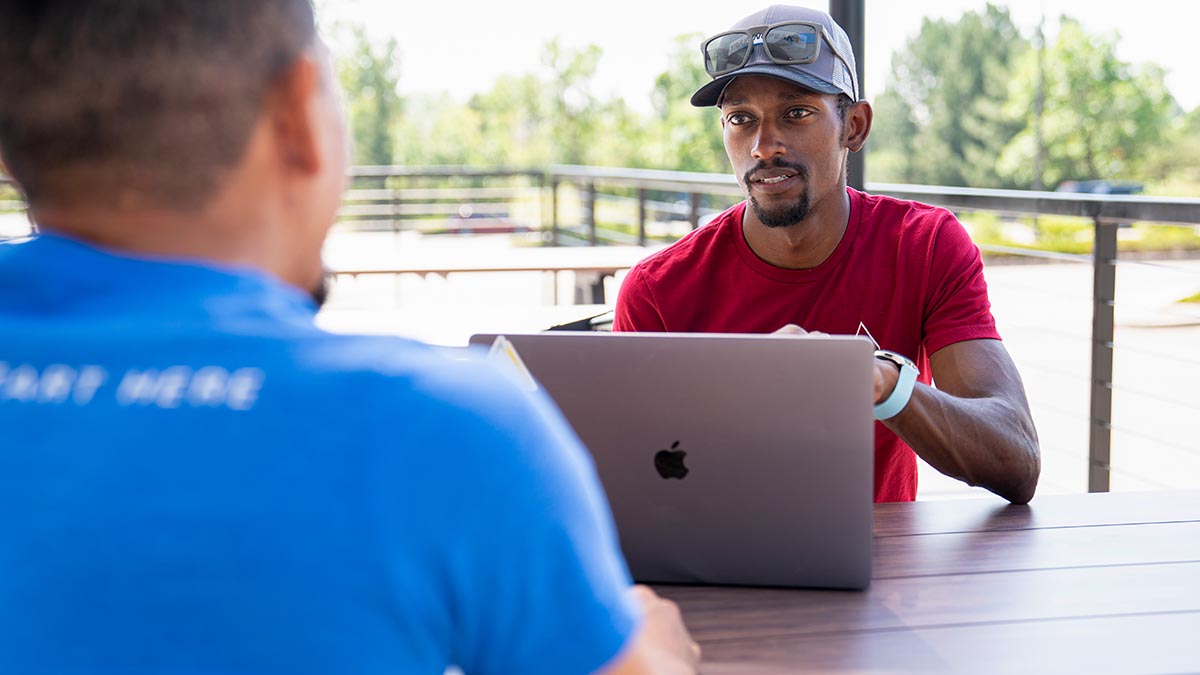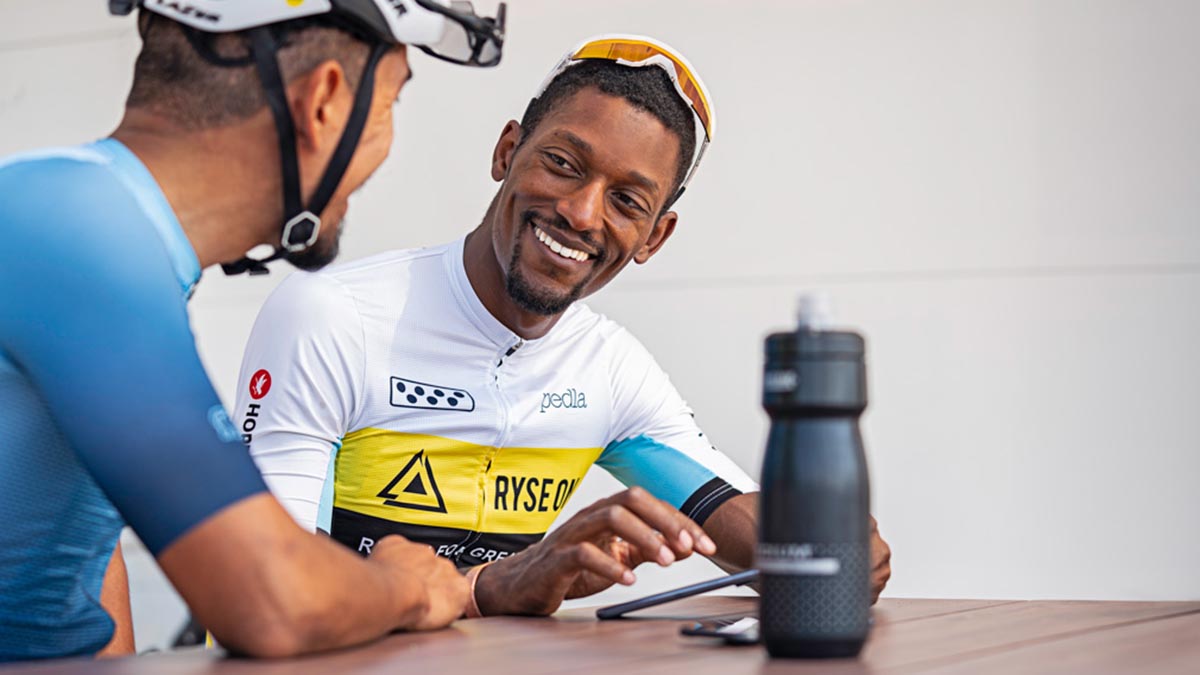When race season gets into full swing, much of your focus is likely on your clients’ physical preparation and programming. But as crucial as this is to help them hit their targets, set new PRs and obtain qualifying times for major marathons, their physiology will only take them so far. It’s also crucial that they’re psychologically ready to race, as the body follows where the mind leads it. Here are some tried and true sports psychology tactics to set your athletes up for success before, during and after their upcoming races.
Pre-Race: Tiered Goal Setting
An athlete might well have a set goal heading into any race. This could be a standalone aim – such as breaking a specific time barrier or, for a newbie, merely crossing the finish line. It could also be a stepping stone on a progressive plan that adds up to a more ambitious long-term outcome or goal. For example, a runner could plan to chip at least 10 seconds off their time over the course of several tuneup races before peaking at an end-of-season event.
Both approaches can yield some success, and the very act of establishing a goal, committing to it, and putting in the requisite work can go a long way to helping your athletes improve their performance. And develop greater self-efficacy as they do so. But the trouble with having a single target for a race is that it creates a sense of all or nothing. When one of your clients has a very specific goal set in stone, they will only be able to hit or miss it. Such a binary approach can provide fuel, particularly for hard-driving, self-motivated personalities. Yet it can also set them up for failure if they fall short, which can negatively affect their confidence. Sensitive types can feel this more acutely, and it can set them back mentally for the rest of the race calendar and ding their motivation in training.
A better approach to goal setting is to create more than one opportunity for seizing success and warding off the sense of futility that can result when an athlete can’t hit a single one-size-fits-all target. Sports psychologist Jim Afremow has guided many Olympians to podium finishes. He believes that having several possible levels of attainment for each event – big or small – leads to more sustainable progress and happier, less-stressed athletes. “Ask each athlete to write down their best possible outcome for the race,” Afremow said. “This is their gold medal goal, even if it doesn’t literally equate to winning the race. Then suggest that they write down their lowest acceptable outcome. This becomes their bronze medal goal. Finally, they should pick a point in the middle, their silver medal goal. They’ll obviously be motivated to go for gold but will be able to live with silver or bronze if things don’t go their way. Next time they have a race that’s the same length, you can help them recalibrate all three goal levels so that they keep seeing progress between performances.”
Mid-Race: Self-Talk and Mantras
No matter how well you’ve helped an athlete prepare, how competent they are, and how smoothly things go during the event (see: weather conditions, contact with other competitors, hydration status, etc.), there’s going to come a point during every race where they will be forced to confront adversity head-on. At that moment, they’re going to be faced with a three-way decision: give up, slow down or push on. Such choices might be made in the moment, but they’re conditioned by the athletes’ psychological preparation before the event and the mental skills they utilize during it.
Self-talk is an undeniably effective tactic to share with your racers. It’s great for you to provide positive reinforcement to your athletes before a race or for spectators to cheer on the competitors as they pass by. But arguably, the most critical and influential words anyone hears are the ones that they say to themselves. An increasing body of evidence suggests that self-talk doesn’t merely positively influence thought patterns and emotions but actually prompts physiological responses to stress management that could have a beneficial additive effect on performance.
A team of Canadian, American and Brazilian researchers tested how runners responded to positive and negative statements, while a third group watched a documentary instead of talking to themselves. They found that “RPE scores, minute ventilation, breathing frequency, and salivary cortisol were significantly higher in the NST [negative self-talk] group compared to the two other groups.” The increase in these stress markers led the co-authors to conclude that “manipulating self-talk alters hormonal response patterns, modulates cardiorespiratory function, and influences perceived exertion.”
One of the most extensively race-tested self-talk strategies your clients could use is to come up with and repeat an empowering mantra or saying. This could be as simple as identifying a single word, such as “relax” or “strong,” that makes them feel calm, composed, or resilient when the going gets tough. Or they could settle on a phrase or sentence, like “Nobody can beat me.” In an interview with supplement company Momentous, Molly Seidel shared that her mantra going into the Tokyo Olympics was “I’m going to take someone’s lunch money.” This phrase helped her complete the course and brought home a bronze medal for Team USA.
Post-Race: After-Action Review/Self-Reflection
Debriefs are standard practice among military personnel, intelligence officers and emergency services staff. It’s only by shining a light on what happened and why you can accurately evaluate performance from every angle. Indeed, the finishing time, splits, and other data can prove helpful, but they cannot tell you how an athlete felt, what was running through their head, and how they handled setbacks along the course. Conducting an after-action review (AAR) post-race can help you and each of your athletes more fully assess the situation objectively rather than getting overly emotional so that you can see how the result fits into your overall plan for the season and adjust forthcoming training and goals accordingly.
Per the template established by the U.S. Army in the 1970s, author David Garvin wrote that an AAR typically focuses on answering the following four questions:
- What did we set out to do?
- What actually happened?
- Why did it happen?
- What are we going to do next time?
Some organizations add an extra question between the second and third above: Which factors were responsible for the difference between our expectations and what occurred? It’s important to first identify the client’s intentions going into the race and then establish the cold, hard facts of what exactly transpired. The whys explaining what went according to the pre-race plan and what didn’t go as planned can be broken down further into controllables (things the athlete exerted influence on, like their effort level) and uncontrollables (external factors that manifested themselves, such as a thunderstorm).
If you’ve added the extra question, such a delineation can also help identify what created the delta between what you and your athlete hoped would happen and what did. Armed with this information, you can then move on to the final query and decide what should be repeated and those things that should be changed. From there, you can determine how you’re going to alter the race strategy in the next event. Making this a rational discussion will diffuse the disappointment and frustration that often results from a sub-par performance and help the athlete identify and celebrate what they did well.
Bringing It All Together
This post-race review also presents an opportunity to circle back to Afremow’s tiered goal setting. Did the client’s performance hit or come closest to their gold, silver or bronze target? If they metaphorically (or literally, depending on the individual) topped the podium, it’s important to set a new gold goal for their next race. If they won bronze, what do they need to upgrade it to silver? And if their performance was worthy of silver, how can you help them make adjustments to their programming, race tactics, and mindset to claim the gold? Bookending the race with this kind of self-reflection offers the chance for the athlete to celebrate those wins, big and small, and for you to encourage them and build their confidence. They can then head into their upcoming training block knowing they’ve accurately assessed what has happened in the previous race, the plan for the next one and how you’re going to execute it together.
Resources
Author interview with Jim Afremow, April 11, 2022.
Basset, F.A., et al. (2022, March) “Type of Self-Talk Matters: Its Effects on Perceived Exertion, Cardiorespiratory, and Cortisol Responses During an Iso-Metabolic Endurance Exercise,” Psychophysiology. Retrieved from https://pubmed.ncbi.nlm.nih.gov/34837395.
“Going the Distance: Molly Seidel’s Marathon Journey,” Momentous, available online at https://www.livemomentous.com/blogs/news/going-the-distance-molly-seidels-marathon-journey. [1] David A
Garvin, Learning In Action: A Guide to Putting the Learning Organization to Work (Boston: Harvard Business School Press, 2000), 106.








